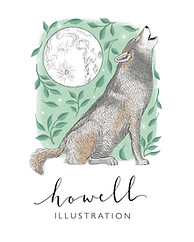Feature Friday: The Carta Marina
- Nicola Hawley

- Apr 19, 2024
- 3 min read
The Carta Marina was created by Olaus Magnus and published in 1539. It has been a massive inspiration in my artistic journey and I wanted to share it with you!
Contents

The Carta Marina is one of the earliest maps of Scandinavia and is the first map of the Nordic countries to give details and place names. It covers Sweden, Norway, Denmark, Iceland, Finland, Latvia, Estonia and Lithuania all surrounded by a sea full of the most fantastic sea creatures imaginable. Highly detailed, beautiful and historical, it is right up my alley - allow me to share it with you!
History of the Carta Marina
Or, to give it its full title: Carta marina et descriptio septemtrionalium terrarum (Latin for Marine map and description of the Northern lands. Published in 1539 by monk Olaus Magnus, and was 1.7m wide by 1.25m tall. It was made with 9 woodcut blocks and was initially created in black and white. It took 12 years to produce.

The map was created in Rome and Olaus Magnus likely created it using different sources, including Ptolemy's ancient map, Jacob Ziegler's contemporary astronomy, his own observations and sailors' stories.
Details of the Carta Marina
I love this map because of its beautiful details. You could look, and look, and look at this map and never see everything that was in it. I also love the original's clarity, and the stunningly accurate lettering. I mean, how on earth did they do that by hand?

And just look at all of those tiny details on the sea creatures: each scale, each shadow is there, every tusk and fin. And on the boats: the sails, the ropes. Wow.


And look at these little people on the land, the reindeer? So beautiful and cool.
Using the Carta Marina as Inspiration
I also love the sea in Antoine Laféry's republished, coloured map. It was a huge inspiration for me in developing my own style of drawing the sea. I also really love the way some of the sea has been drawn in in dots rather than waves, and use this technique frequently in my own work.

I also frequently turn to this map for its lettering. And it was one of the inspirations that let me to one of my own styles of lettering I use on my maps. I also created a font for this style that I called 'Here Be Dragons'.

I also love to include sea creatures in my maps, and always turn to the Carta Marina (a copy of which hangs above my computer) when I want to create some new creatures.

I really hope you've enjoyed this look at the Carta Marina and how it influences my work. Personally, this is one of my favourite maps of all time, and my mind completely boggles at the scale of it, and the ambition: 12 years to produce one map seems insane to us now, but I really envy the time he had to create something so wonderful. I hope I can capture even just a little part of that in my own maps.
Leave a comment below if you've enjoyed this and you'd like to see more like it. I personally love historical maps, so I'd be super happy to look at more with you!
If you want to read more about some of my historical maps, click here to head to this blog that features an interview with author S.G. Maclean about her historical map of Inverness.
Or click here to read about Stef Penney's map for Beasts of Paris, which features an illustrated map of Paris from 1870.
As always, thanks for reading.
Nx




Comments